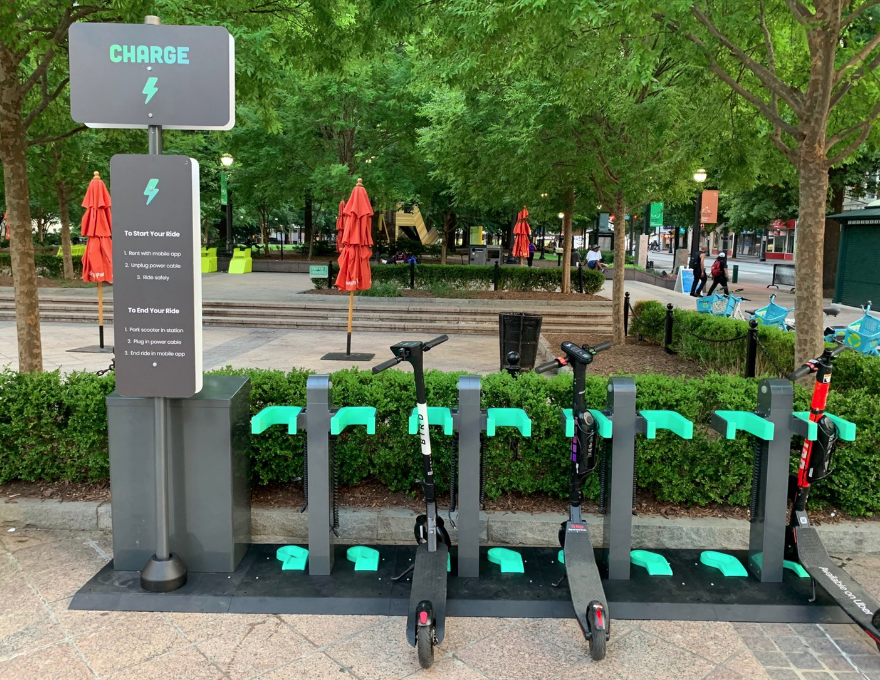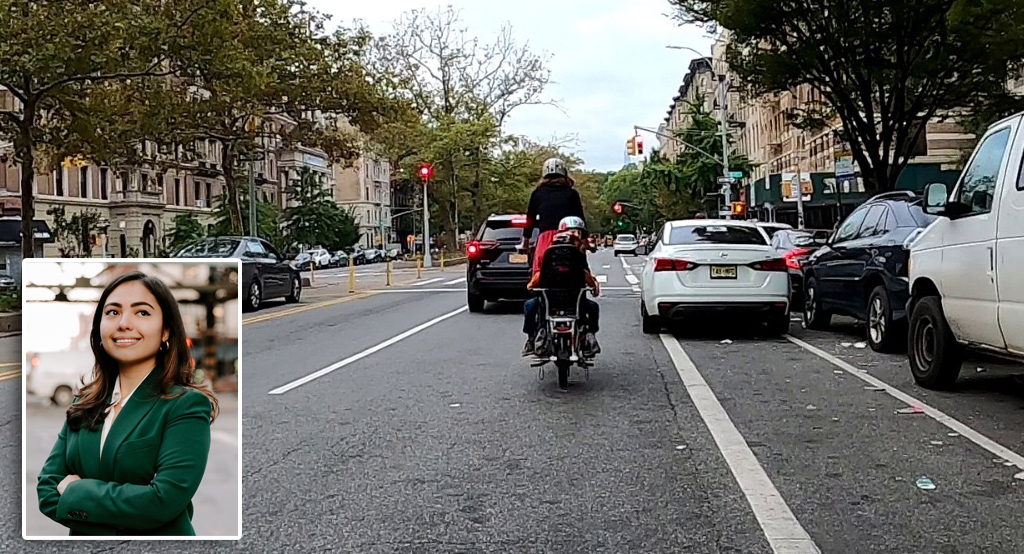As New York City stands poised to open its streets to dockless electric scooters, it ought to seek the installation of charging stations in order to contain the devices and ensure public safety. The stations can be installed in privately owned parking garages and lots and/or in public spaces, as Atlanta did recently at a city park.
Albany is on the cusp of legalizing e-bikes and e-scooters, and the City Council will soon need to regulate how to fit these popular micromobility devices into our increasingly cluttered streetscape. E-scooter charging stations are a relatively new concept for micromobility vehicles that involves battery-powered stations that charge and dock numerous e-scooters simultaneously, varying in size and function according to the needs of the particular city. These are similar to e-bike docking stations, and could provide this vital infrastructure for riders and rideshare operators while also helping to protect pedestrians by keeping e-scooters off walking paths.
E-scooters exploded onto the scene in major cities around the world over the course of just a few years. But in the rush to deploy the devices to the market, little thought was given to the infrastructure for containing them. Many e-scooters have been left on sidewalks, street corners and in building entries, creating trip hazards.
Since scooters have rolled out in cities, including Los Angeles, Bogota and Brussels, pedestrians and city officials alike have expressed concern about cluttered sidewalks. Even as advocates have hailed scooters as an emerging solution to the short-distance transportation needs of urban residents, critics have pointed out the hazards the devices have created, especially for people with disabilities or limited mobility. Other critics have blasted scooters for not delivering as “green” a transportation alternative as promised. In particular, they complain about the environmental toll of “juicer” trucks, the gas-guzzling vans that scooter companies must deploy vans in order to pick up spent scooters every night.
Charging infrastructure solves this problem by providing “fuel” to e-scooters while at the same time cutting down on CO2 emissions: If scooters are stored centrally, juicer trucks don’t have to drive around looking for them. Further, by having dedicated spaces to store and charge these vehicles, e-scooters are less likely to be thrown into disarray, which can lead to disrepair and cause e-scooters to breakdown more quickly. By using charging stations to keep e-scooters orderly, operators can get longer use of their devices and increase the lifespan of e-scooters.
Charging stations are a win for everyone. Pedestrians and people with disabilities don’t have to deal with stray e-scooters as they navigate through the streets. Users, on the other hand, know exactly where to locate e-scooters and don’t have to worry about whether the devices are sufficiently charged.
Even more important, micromobility companies can begin to develop and offer new technology geared to assisting pedestrians with disabilities, making streets even safer. For example, services such as BlindSquare can alert those with visual impairments when there is an e-scooter or charging station nearby.
It’s clear that e-scooters are here to stay. In 2018 alone, more than 38 million trips were taken on e-scooters — and that number will steadily rise every year.
It’s time that local governments and the industry work together to implement an infrastructure-based approach to e-scooters. Only then can cities truly reap the benefits of this environmentally friendly, reliable and safe solution to first and last-mile transportation.
Quemuel Arroyo is the global head of community at Charge, a network of electric charging, storage and service stations for micromobility devices.







